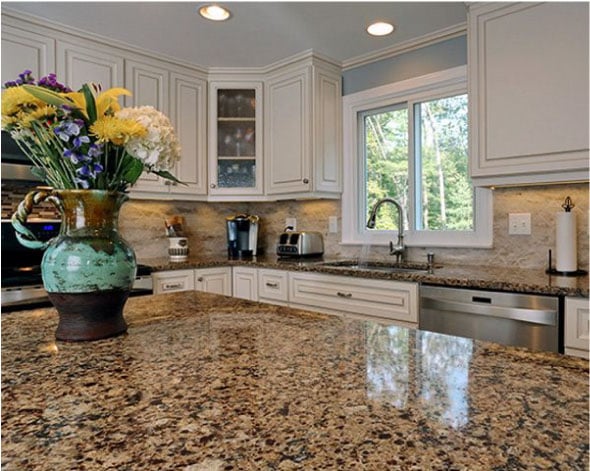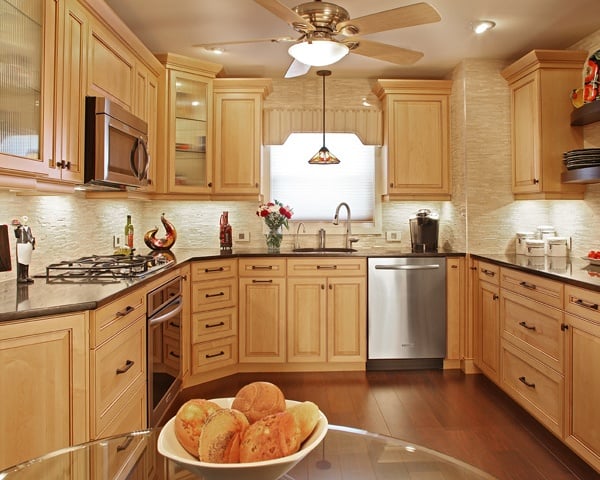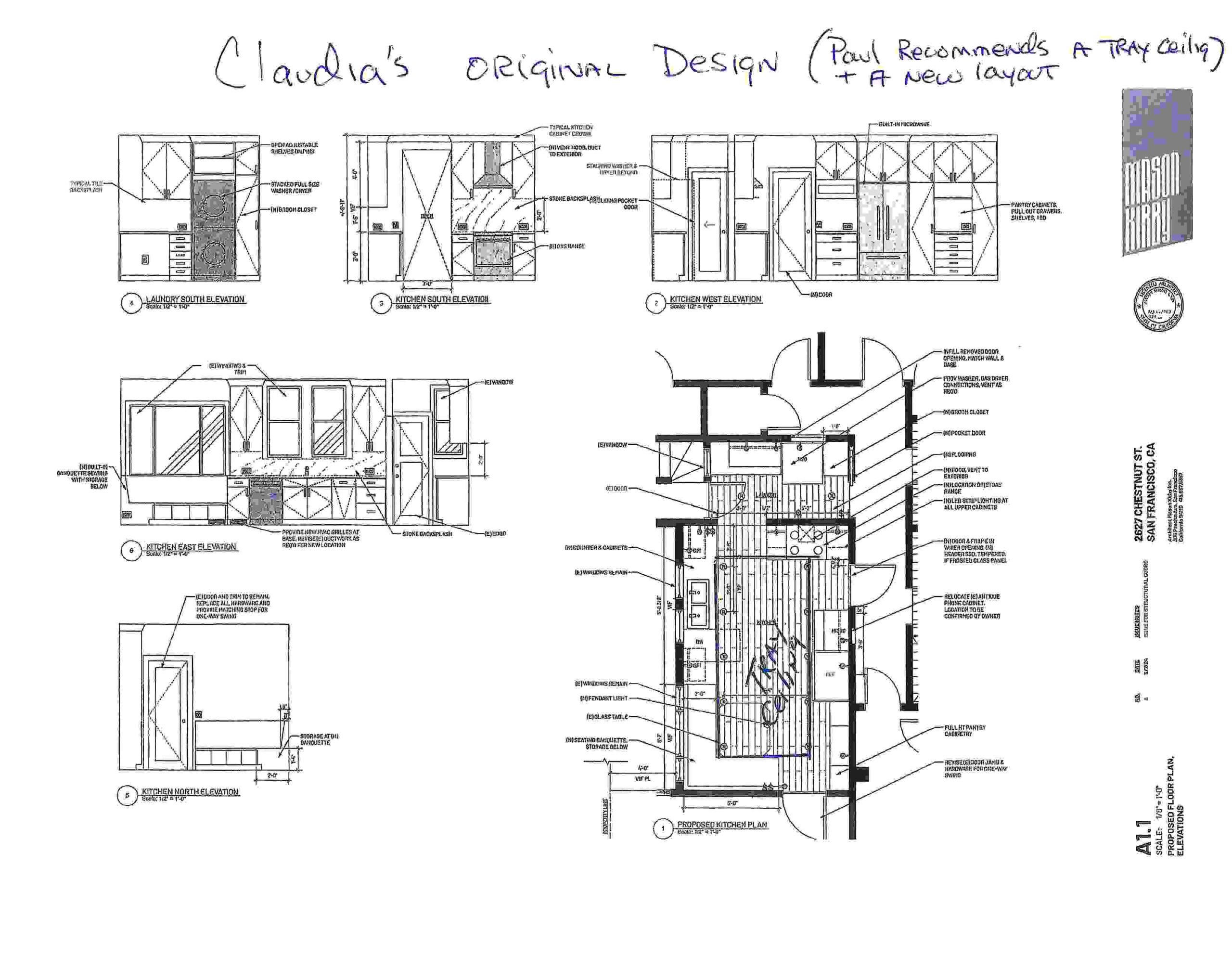When designing a kitchen, choosing the right colors is essential for creating a harmonious and inviting atmosphere. Colors have a distinct impact on how a room functions and feels. It is critical that you consider how a color may affect appetite, mood, and even how clean the room appears. Some colors can make a room appear smaller, while others can be overly stimulating or difficult to maintain. Understanding the psychological and practical implications of a color can aid in the selection of hues that improve the kitchen’s aesthetics and functionality.
The choice of a kitchen color is distinctly personal, so it always depends on how the homeowner feels about a particular color. If you like one of the colors we have mentioned, do not let it discourage you from painting your kitchen exactly how you want it; just keep in mind that painting a kitchen is an expensive endeavor, so you should always feel confident in your choice.
Colors to Avoid in a Kitchen
When selecting a kitchen color, it is always recommended that you aim for balance. When choosing an appropriate color for your kitchen, consider the size of the room, the amount of natural light it receives, your personal preferences, and the overall mood you want to create.
Bright White

While white kitchens can appear crisp, clean, and timeless, some shades of bright white have disadvantages that make the color worth reconsidering. Cool shades of bright white can give your kitchen a clinical and cold feel if not balanced with warmer elements. Bright white kitchens show stains, scuffs, and splatters, making them difficult to keep clean. Bright white also reflects rather than absorbs light, so it reflects glares, which can contribute to harsh lighting conditions or raise the room temperature.
If you enjoy white kitchens, you can still have one that appears white but is slightly more nuanced. Choose warm off-white shades and balance them with other neutral shades and warm, textured natural elements such as wood, stone, and brightly colored metals.
Dark Brown


Dark browns are currently popular in home design, as there is a growing interest in colors that reflect the natural world, but dark browns should be used sparingly. Dark colors, such as browns, absorb more light than they reflect, causing a room to appear smaller and less inviting. Very dark colors show more crumbs and water spots than lighter colors, making maintenance more difficult. Dark brown can be overwhelming and a design challenge to blend with other colors.
Dark brown is a stunning color, but it should be used sparingly in the kitchen. Using dark brown as an accent color and blending it with lighter neutrals contributes to a more balanced and inviting kitchen atmosphere.
Cool Grays


Gray has been in the spotlight of interior design for the past decade, but interest in cool grays is waning. Cool grays can appear too clinical in today’s homes, where most homeowners prefer to create a more welcoming environment. Cool grays lack the depth and nuance of warm grays, which remain popular and complement other warm neutral tones. These colors can also have a negative impact on mood and elicit feelings of detachment.
Gray is still used in kitchen design, but a warm gray shade is preferable to a cool gray. Warm grays have deeper undertones, making them a better color complement and more dimensional than cool grays.
Strong Reds and Oranges


Vibrant reds and oranges are striking and energetic colors, but they should be used sparingly in kitchens for several reasons. Bright reds and oranges are known to stimulate the appetite and lead to overeating. Reds and oranges are overwhelming colors that dominate the space they inhabit. It can be difficult to achieve balance with other colors and elements in a red or orange kitchen. These colors are also known to have a strong psychological effect; they can evoke strong energy or emotions, which may lead to feelings of stress and overstimulation.
People who favor reds and oranges can still use them in their kitchen. Consider opting for muted shades of red and orange, like terracotta, coral, and rose. These colors will still give you the richness of the color but they are easier to blend. You can also consider using the bright tones of red or orange as accent colors in a few places throughout the kitchen.
Yellow


While yellow is a cheerful and inviting color, it has some drawbacks that make it difficult to use in the kitchen. Yellow, like reds and oranges, can stimulate the appetite and cause heightened energy. Vibrant yellows are also more difficult to coordinate with other colors.
You can still use yellow in your kitchen, but choose muted, soft shades over bright yellows. These more subdued yellows will play well with other colors as well as brighten and warm your kitchen without having to always be the center of attention.
Vibrant Pinks and Purples


Hot pink and purple tones can create a disnct and lovely aesthetic, but they are not the most timeless choices for kitchens. Bright pinks and purples are perceived as trendy, so they will not age as well as more traditional colors. Because of their associations with femininity and luxury, these colors are more specialized and may not appeal to everyone. It is important to choose a color that complements other colors in your kitchen because it is frequently the focal point of the house and has connections to other rooms. Pinks and purples are limited because they are not as versatile as neutral or classic colors. .
Pinks and purples may work well in kitchens. To achieve the desired look with fewer drawbacks, opt for muted pinks or purples or neutral shades with a pink or purple undertone.
Neon Colors

Neon colors are bright and highly saturated colors that appear to glow in the dark. These colors are valuable in certain styles of interior design, specifically in contemporary, modern, and retro styles. Yet, these colors are so overpowering that they are not the best candidates for kitchen design. Neon colors are challenging to blend with other colors, and they can cause visual overstimulation when there is too much neon.
Neon colors bring vibrancy and energy to a room, but they are best used in small doses. Add touches of neon using dishware and decor, which are easy to change out when you are ready for a new look.
What are the Best Colors for a Kitchen?
Instead of just detailing the colors that don’t work in a kitchen, we wanted to provide you with some of our favorite color options for a kitchen space. Neutral colors such as soft off-whites, warm grays, and other warm neutrals look great in today’s kitchen. Other popular choices include earthy tones such as blues and greens, which are classic kitchen colors. Black is an amazingly current and timeless option that provides a traditional kitchen look while remaining trendy and chic.






